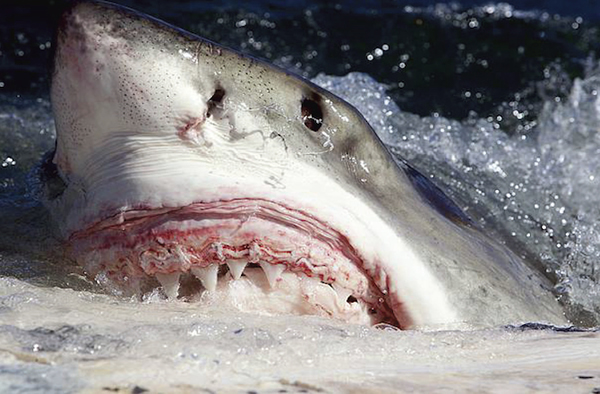Shark Attack Stats: Why So Unpredictable?
A great white shark feasts on a whale.
A number of factors are affecting how many shark attacks and fatalities occur each year, and most of them have little to do with sharks and more to do with humans, according to shark experts.
The reasons help to explain why shark attack statistics fluctuate so much from year to year. A report released by the University of Florida’s International Shark Attack File earlier this week, for example, found that there were 10 human fatalities worldwide due to shark attacks, which is higher than the 10-year average from 2003-2012.
The U.S., on the other hand, only had one fatality- in Hawaii- and 47 shark attacks nationwide. This was lower than the 2012 total of 54.
“Shark attack rates, in general, have been rising every decade since the 1900s and yet there has been a sharp decline in the shark population,” George Burgess, curator of the Shark Attack File, told Discovery News. “Sharks are highly migratory animals that act predictably, so other forces are at work.”
Social and economic factors are two big drivers. A lousy economy usually helps keep shark attacks down.
“If the economy’s bad,” Burgess explained, “people won’t have money for vacations at the beach, and they won’t be as likely to gas up their car to go surfing.”
Our population continues to rise, however, as does our mobility.
“The more off the beaten path we go, the more likely shark attacks will occur,” he said.
Globalization, tourism and population growth worldwide have all led to shark attacks in historically low-contact areas. These include places like Reunion Island, Papua New Guinea, Madagascar, Solomon Island and the small island of Diego Garcia in the Indian Ocean. The latter saw its first recorded shark attack in 2013.
Cage diving, where tour organizers attract sharks with bait, also can increase the chances for attack.
“We have previously analyzed data to see which sharks are hanging around shark tours with cage divers on Oahu, and one of the things we noticed was that you’d get a spike in how many tiger sharks are seen in October, which would match our predicted model that you’re having an influx of big, pregnant females coming from the northwestern Hawaiian Islands,” said Yannis Papastamatiou, a marine biologist with the Florida Museum of Natural History.
Tiger sharks are one of the big three sharks of concern to experts because they tend to be large, with huge serrated teeth that can lead to serious injuries and fatalities. The other two in the big three are great whites and bull sharks. Most attacks, however, are by smaller whitetip and blacktip sharks, particularly in waters off of Florida.
Ocean current changes and climate greatly influence shark attack stats.
“If there’s a hurricane, obviously most people aren’t going to be flocking to the beach,” Burgess said.
There additionally is a domino effect, where changes in temperature could impact the amount and location of typical prey, which would then alter shark migration routes.
Global climate change is affecting the entire system.
“We are seeing more warm water species moving up coastlines as water temperatures increase,” Burgess said. “Sharks from the South are moving north.”
In response to the increased number of shark attacks, Australia and Natal, South Africa, are culling great white sharks, which actually prefer colder waters and are highly endangered.
“Culling is very poorly considered and can only be characterized as revenge killings,” Burgess said. “Other countries have reduced their number of attacks using more effective ways.”(Feb 19, 2014 02:40 PM ET // by Jennifer Viegas)












